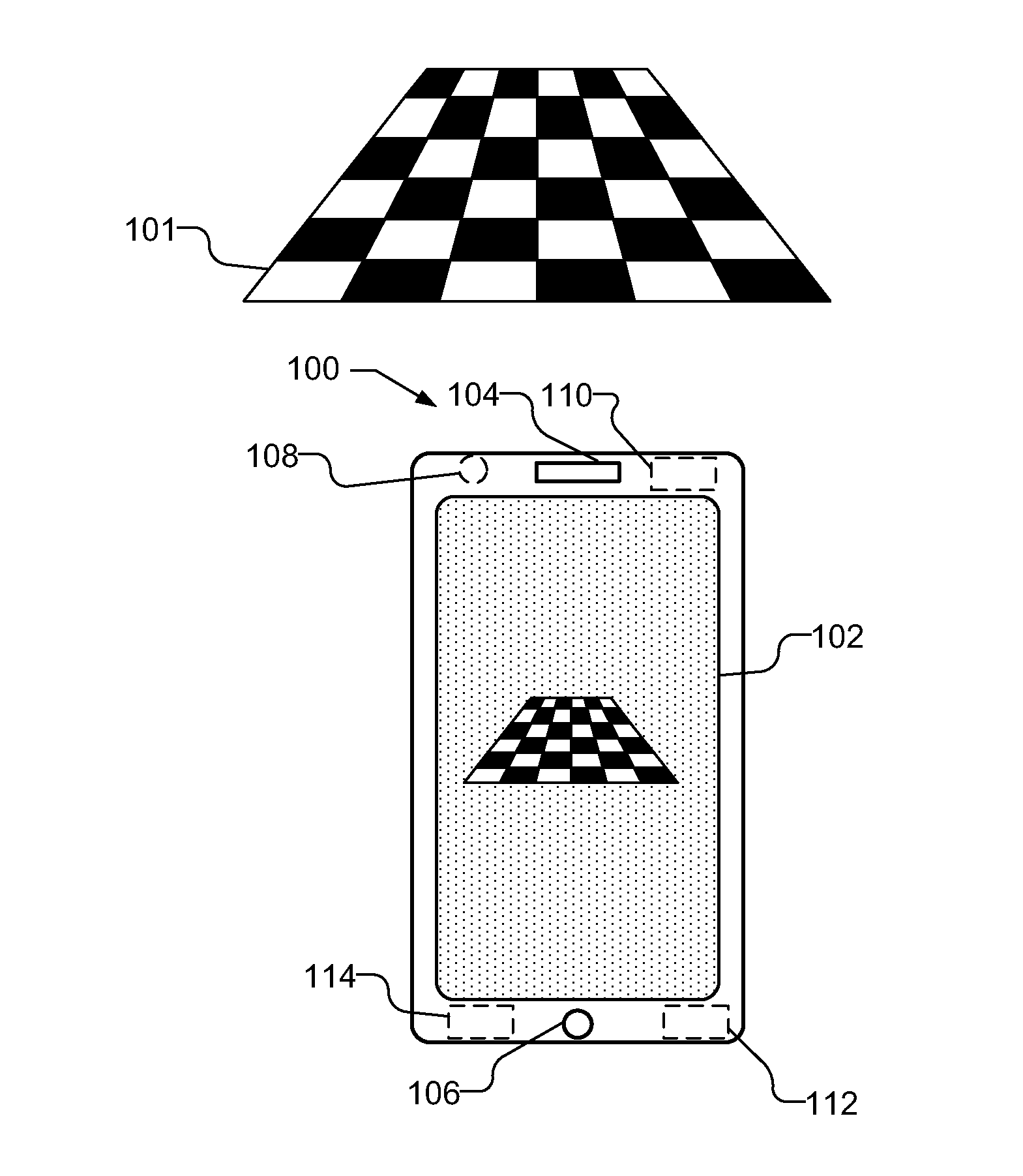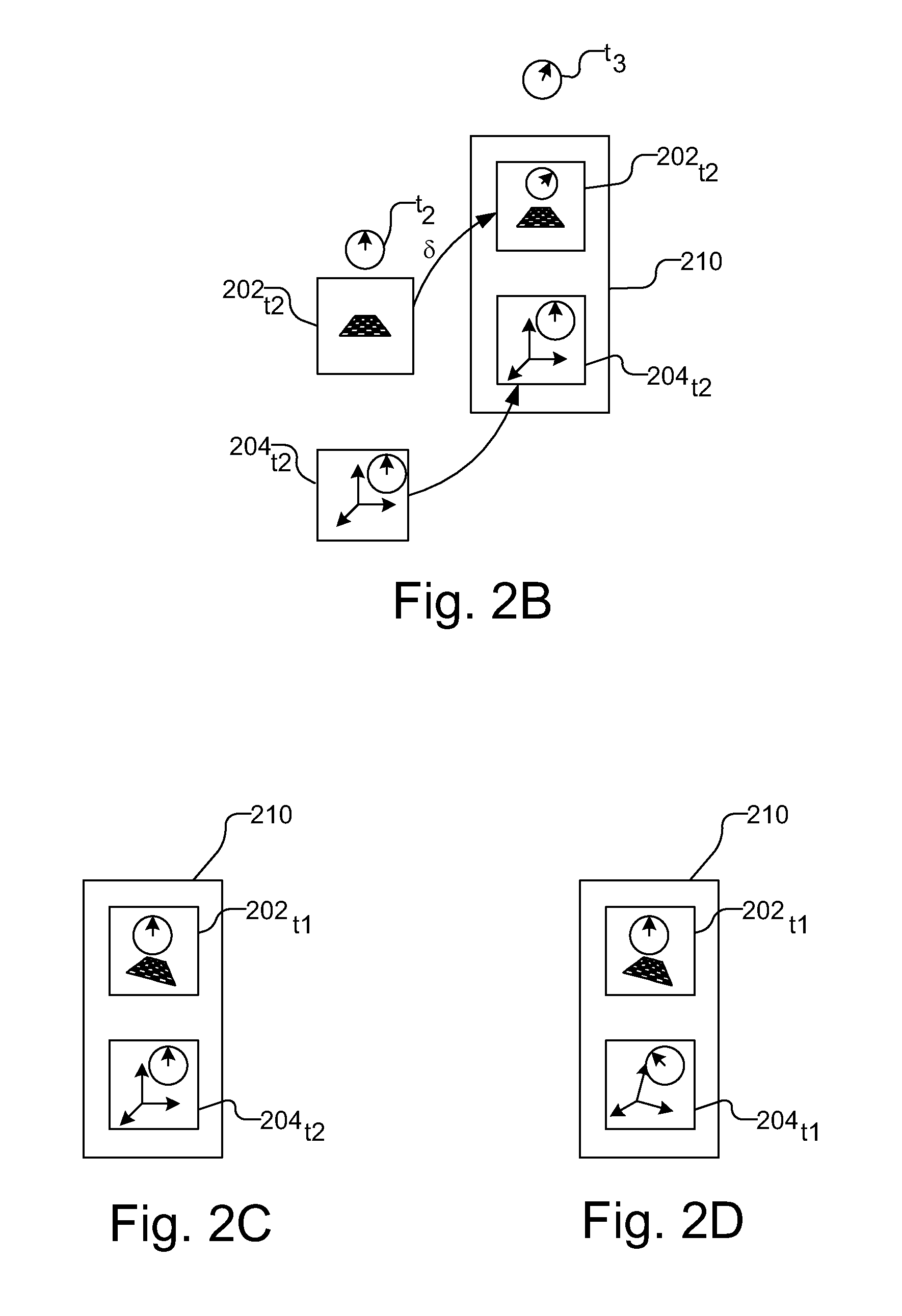Adaptive estimation of frame time stamp latency
a frame time stamp and estimation technology, applied in the field of image processing, can solve the problems of poor robustness of computer vision based tracking methods, many current mobile devices without time stamp fields, and inaccurate sensor time stamps
- Summary
- Abstract
- Description
- Claims
- Application Information
AI Technical Summary
Benefits of technology
Problems solved by technology
Method used
Image
Examples
Embodiment Construction
[0017]FIG. 1 illustrates a mobile device 100 capable of compensating for lack of a time stamp when the image frame is captured. The mobile device 100 time stamps the frame after a frame time stamp latency from when the frame has been captured by the camera. For example, a captured frame is not time stamped at the sensor level, e.g., by the camera when captured, but is time stamped later, e.g., when the frame reaches an application level, which may be the High Level Operating System (HLOS), which may be, e.g., Android, iOS, etc, or other level. The frame time stamp latency may be a function of the type of mobile device 100 as well as the camera frame rate, which depends on frame rate which depends on lighting conditions. The mobile device 100 estimates the frame time stamp latency based on a vision based rotation and inertial sensor based rotation, and uses the estimated frame time stamp latency to correct the frame time stamp latency in subsequently captured images.
[0018]As used her...
PUM
 Login to View More
Login to View More Abstract
Description
Claims
Application Information
 Login to View More
Login to View More - R&D
- Intellectual Property
- Life Sciences
- Materials
- Tech Scout
- Unparalleled Data Quality
- Higher Quality Content
- 60% Fewer Hallucinations
Browse by: Latest US Patents, China's latest patents, Technical Efficacy Thesaurus, Application Domain, Technology Topic, Popular Technical Reports.
© 2025 PatSnap. All rights reserved.Legal|Privacy policy|Modern Slavery Act Transparency Statement|Sitemap|About US| Contact US: help@patsnap.com



